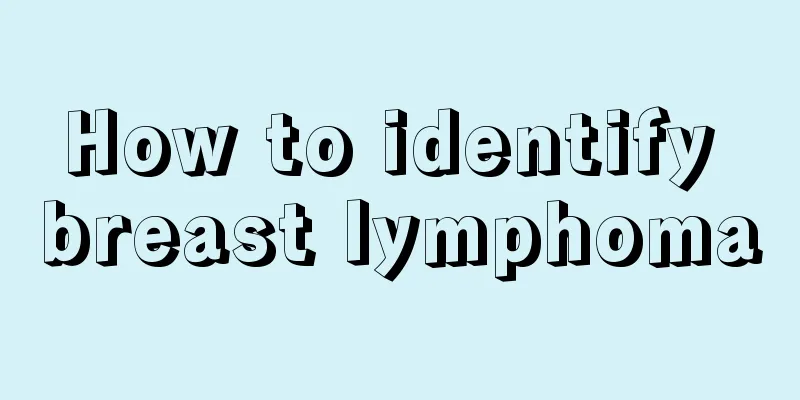How to identify breast lymphoma

|
When it comes to breast lymphoma, people may mistakenly think that it is breast cancer. In fact, the two are different. Because breast lymphoma is not common, we must learn to distinguish its clinical manifestations from breast cancer. So let’s learn how to identify breast lymphoma. Female friends in particular should pay more attention to these common sense so as to avoid the occurrence of lesions. Because breast lymphoma is uncommon and its clinical manifestations are difficult to distinguish from breast cancer, it is often overlooked at the beginning of the biopsy. Breast lymphoma is larger than breast cancer, but this cannot distinguish the two. If the patient's tumor grows rapidly in a short period of time, it is suggestive of malignant lymphoma. Some common symptoms of breast cancer, such as skin retraction, erythema, orange peel appearance, and nipple discharge, are uncommon in primary breast lymphoma. The differential diagnosis from low-grade breast lymphoma includes MALT-type lymphoma, follicular lymphoma, lymphocytic breast disease and secondary invasion of systemic lymphoma, such as small lymphocytic lymphoma/chronic lymphocytic leukemia (CLL) or mantle cell lymphoma (MCL). The differentiation between MALT-type and lymphocytic breast disease is mainly based on the histological background. MALT-type infiltration is mainly composed of extrafollicular cell components, accompanied by irregular nucleoli and a large amount of cytoplasm, and may be mainly lymphoepithelial lesions. It is also necessary to confirm clonality through immunohistochemical staining, flow cytometry or molecular genetic analysis. For follicular lymphoma, a large number of follicles can be seen, among which small cleaved cells are the main ones; bcl-2 protein staining may be helpful in distinguishing benign from malignant. Small lymphocytic lymphoma or mantle cell lymphoma occurring in the breast can both disseminate widely, and immunohistochemistry may be helpful. CLL and MCL are both CD5, and mantle cell lymphoma is positive for cyclinD1, while MALT and follicular lymphoma are CD5 and cyclin D1 negative. Large cell lymphoma and Burkitt lymphoma of the breast must be differentiated, and should also be differentiated from non-lymphoid system tumors, such as common poorly differentiated breast cancer, and should also be differentiated from lymphoblastic lymphoma or leukemia infiltration. Any breast cancer without typical characteristics should undergo immunohistochemistry to rule out hematopoietic malignancies. Because many diseases actually have some similar characteristics. If we confuse two diseases and do not adopt targeted treatment plans, the possible impact and threats will naturally be more serious. So I hope everyone can pay attention to these common sense and make scientific and correct judgments. |
<<: When is the best time to get an IUD?
>>: What is the reason for 1.3 cm of pelvic fluid?
Recommend
"Henan Health" 24 Solar Terms · End of Heat丨"Tricks" to Say Goodbye to Autumn Fatigue
Your browser does not support the video tag "...
What is the white paste that comes out of a woman's nipple?
The breasts of women are the most important part ...
What causes miscarriage?
Today's women's physical health is affect...
Can pregnant women eat raw dates?
During pregnancy, there are many foods that pregn...
Can female anal eczema be cured?
The biggest problem women face after getting marr...
What is the normal size of the ovulatory follicle?
Ovulation is a normal physiological process for n...
Will progesterone decrease in ectopic pregnancy?
We know that when progesterone is relatively low,...
How to prevent pregnancy after childbirth?
How to prevent pregnancy after childbirth has bec...
How to relieve breast hyperplasia pain
For female friends, breast hyperplasia is a very ...
What are the symptoms of early pregnancy in women?
Women will have some reactions after becoming pre...
Can female genital warts be cured?
Genital warts are a viral skin disease with a ver...
"Pregnant Sugar" mothers celebrate the New Year
"Pregnant Sugar" mothers celebrate the ...
How much does it cost to do a sugar screening? How much does it cost to do a Down syndrome screening?
When preparing for pregnancy, you need to do a pr...
Can I eat the buns sold outside during pregnancy? What buns can pregnant women eat?
As we all know, steamed buns are a popular type o...









